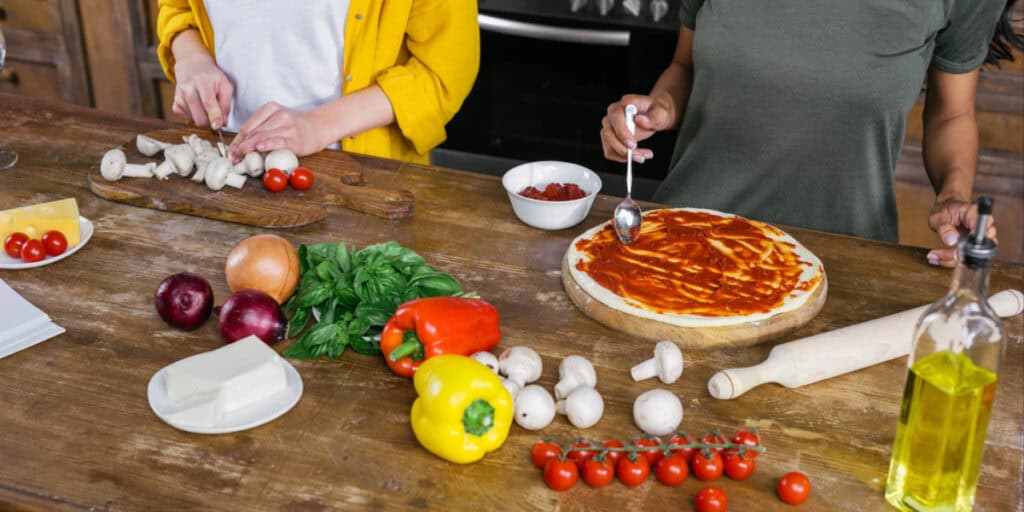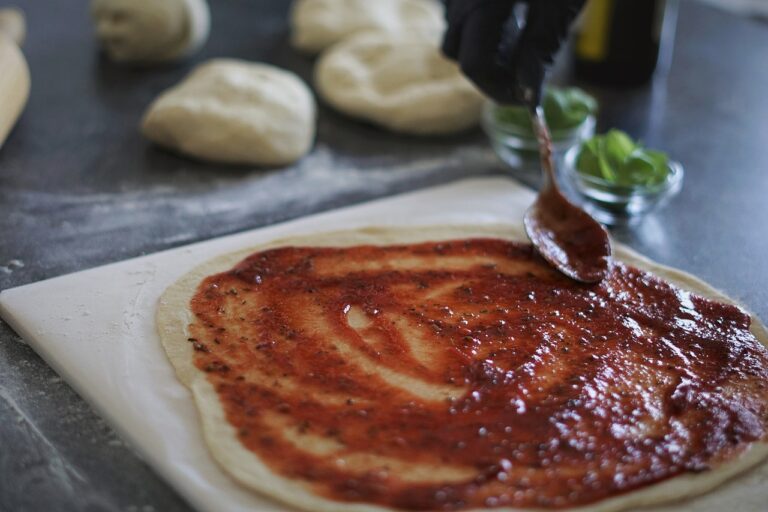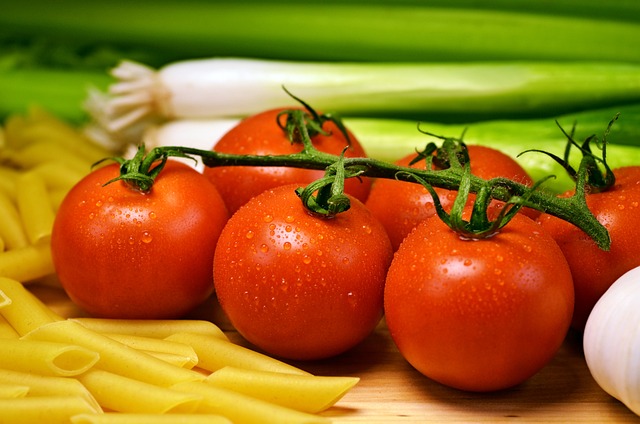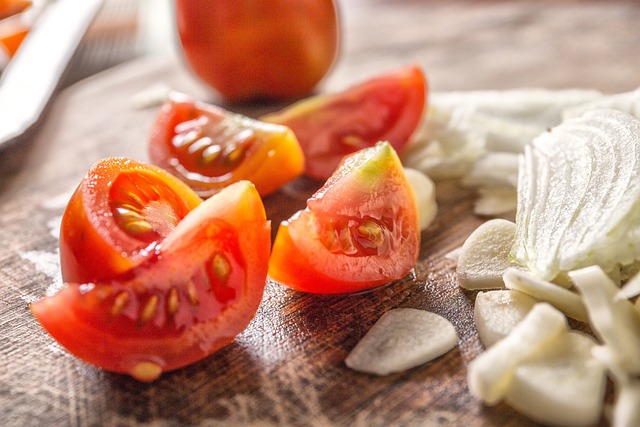From Scratch: Secrets to Making Homemade Pizza Sauce That Will Wow Your Guests
Are you tired of store-bought pizza sauce that just doesn’t cut it? Look no further! This article will reveal the secrets to making homemade pizza sauce that will wow your guests.
You’ll learn how using fresh ingredients and choosing the right tomatoes can make all the difference. We’ll also show you how to balance flavours with herbs and spices and achieve maximum flavour through slow simmering. Plus, we’ve got some tips and tricks for perfecting the consistency. Get ready to impress with your next homemade pizza creation!
The Importance of Using Fresh Ingredients
To make a delicious homemade pizza sauce, you must prioritize using fresh ingredients to elevate the flavours and impress your guests.
Using canned tomatoes as the base for your sauce is convenient, but using fresh tomatoes will take your dressing to another level. Fresh tomatoes have a vibrant taste that their canned counterparts cannot replicate.
Experimenting with different herbs and spices is crucial in creating a flavorful sauce. Add some dried oregano for a classic Italian touch or red pepper flakes for a spicy kick. Don’t be afraid to get creative and customize the sauce according to your taste preferences.
Choosing the Right Tomatoes for the Sauce
When selecting tomatoes, make sure you go for ripe ones that are firm and have a bright red colour. Here’s what to look for when choosing the right tomatoes for your homemade pizza sauce:
San Marzano: These plum-shaped tomatoes are known for their sweet and slightly tart flavour, making them perfect for sauces.
-
Roma: These oval-shaped tomatoes have a meaty texture and low juice content, thickening your sauce nicely.
-
Cherry: These small, bite-sized tomatoes add sweetness to your sauce and are great if you prefer a chunkier texture.
Heirloom: These colourful
Variety comes in different shapes and sizes, each with unique flavour profiles. Experiment with different types to find your favourite.
Balancing Flavors: Herbs and Spices
Add a combination of herbs and spices that complement the taste of your chosen tomatoes to enhance the flavours of your sauce.
Don’t limit yourself to just the traditional herbs like basil and oregano. Experiment with alternative herbs such as thyme, rosemary, or cilantro to add a unique twist to your pizza sauce. These herbs can bring out different flavour profiles in your sauce and make it stand out.
In addition to herbs, don’t be afraid to get creative with spice combinations. Add a pinch of red pepper flakes for heat or a dash of smoked paprika for a smoky undertone.

Slow Simmering for Maximum Flavor
Simmering the sauce melds the flavours together, developing a rich, complex taste. Slow cooking is critical to achieving that perfect balance of flavours for homemade pasta sauces like marinara. The gentle heat of simmering allows the ingredients to release their natural aromas and blend harmoniously. By taking your time with the process, you can enhance the flavours and create a sauce that will impress even the most discerning palates.
Consider combining fresh herbs, spices, and other flavourings to make the most of your slow simmering technique. Here’s a table outlining some popular options:
| Herbs | Spices | Other Flavorings |
|---|---|---|
| Basil | Garlic Powder | Red Wine |
| Oregano | Onion Powder | Balsamic Vinegar |
| Parsley | Crushed Red Pepper Flakes | Parmesan Cheese |
Experiment with different combinations until you find your signature sauce. Remember, patience is vital when simmering – let those flavours mingle and develop over time for maximum impact on your next pasta night!
Tips and Tricks for Perfecting the Consistency
To achieve the perfect consistency for your pasta sauce, stir frequently and gradually add liquid as needed.
Achieving the ideal texture is all about finding the right balance between thick and smooth. Start using a wooden spoon to stir your sauce while it simmers gently on low heat. This will help distribute the flavours evenly and prevent burning or sticking at the bottom of the pot.
As you stir, check the thickness of the sauce. If it becomes too thick, add more liquid, such as broth or water.
Experimenting with different tomato varieties can also make a big difference in achieving that perfect consistency. Try using San Marzano tomatoes for a rich and velvety texture or Roma tomatoes for a thicker and chunkier sauce. Don’t be afraid to get creative and mix different types of tomatoes until you find your favourite combination!

Frequently Asked Questions
Can I Use Canned Tomatoes Instead of Fresh Tomatoes for Homemade Pizza Sauce?
Yes, you can use canned tomatoes for homemade pizza sauce. The pros are convenience and consistent flavour. However, the cons are a slightly different taste and texture compared to fresh tomatoes.
How Long Does It Take to Simmer the Sauce for Maximum Flavor?
Simmer the sauce for at least 30 minutes to maximize flavour development. Let all those tasty ingredients meld together, turning it into a savoury masterpiece that will make your guests say, “Wow!”
Can I Use Dried Herbs Instead of Fresh Herbs for the Sauce?
Dried herbs can affect the flavour of pizza sauce, but they’re worth it for convenience. You can substitute dried herbs for fresh in other homemade sauces, but the taste might differ slightly.
What Is the Best Pot to Use for Slow Simmering the Sauce?
When it comes to slow-simmering sauce, the best pot type is a heavy-bottomed one. It distributes heat evenly and prevents burning. So grab your trusty pot and get ready for some delicious pizza sauce!
Can I Freeze the Pizza Sauce for Later Use?
Yes, you can freeze the pizza sauce for later use. Freezing is a great way to preserve homemade spices, which taste delicious when thawed. Just make sure to store it properly in an airtight container.





